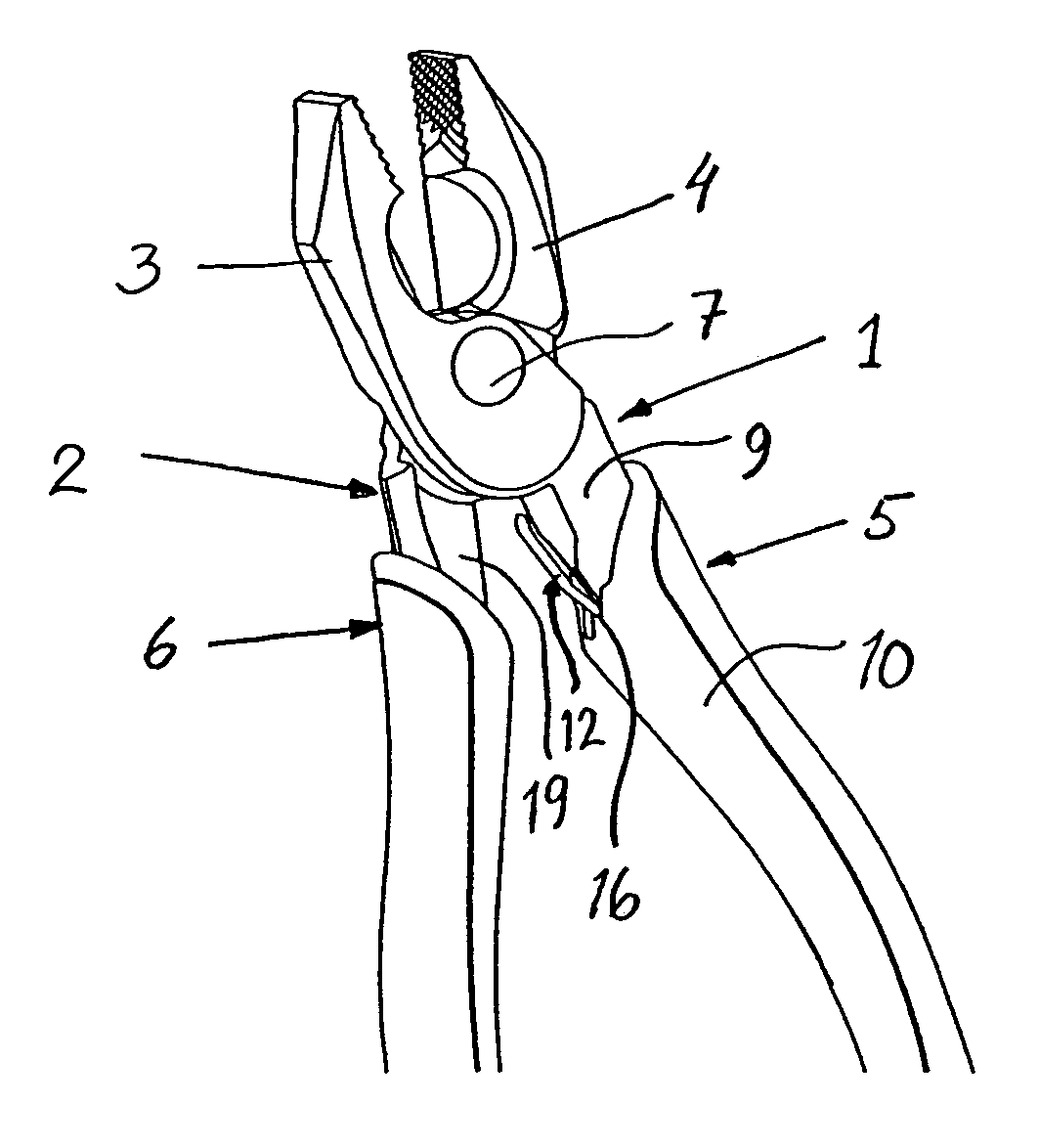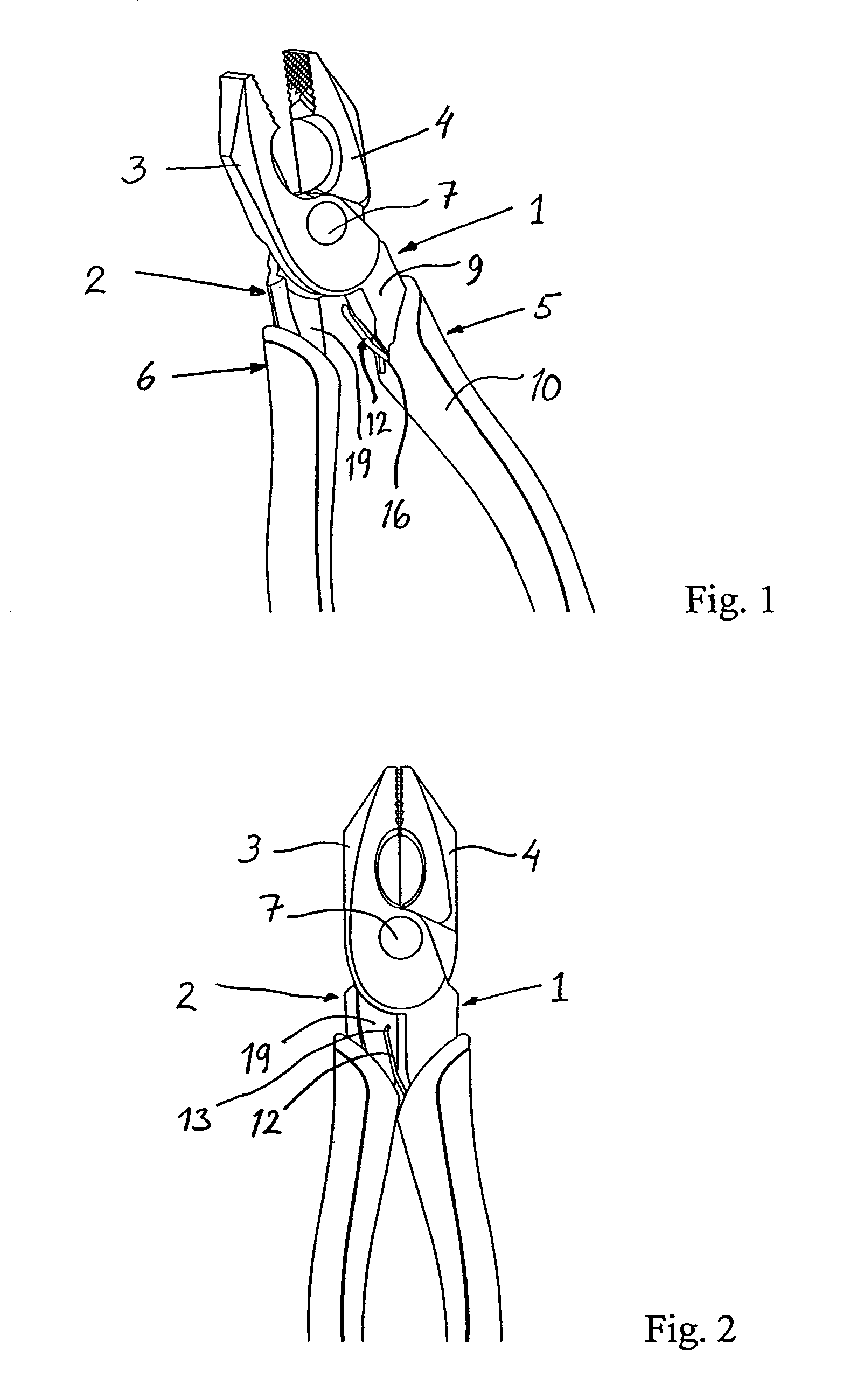Hand tool
a technology of hand tools and return springs, applied in the field of hand tools, can solve the problems of not being able to mount back, being considered impractical or uncomfortable with a return spring, and many users who do not want the function of the return spring
- Summary
- Abstract
- Description
- Claims
- Application Information
AI Technical Summary
Benefits of technology
Problems solved by technology
Method used
Image
Examples
first embodiment
[0027]According to the present invention the spring is able to take an active position and an inactive position. This can be achieved by providing the sleeve illustrated in FIGS. 1–5 with guides 16, 17 that define two spring positions. As will clearly be seen from the enlarged view of FIG. 5 the first guide 16 defines a first inactive position for the spring 12. The second guide 17 defines a second position for the spring 12 which is an active position. The inactive position is also illustrated in FIGS. 1 and 2, where the guide 16 and the placement of the spring in the inactive position is especially evident from FIG. 1. The active position is also illustrated in FIGS. 3a, 3b and 4, where the guide 17 will be especially evident from FIG. 3a.
[0028]The two guides 16 and 17 are, according to the first embodiment, executed as two grooves provided on the inside of the sleeve 10, i.e. the inner surface facing the inner part 9 of the gripping part. The two positions for the spring 12 are...
second embodiment
[0030]In FIG. 6 it is illustrated the present invention and in enlargement. According to this embodiment the sleeve has three guides 16, 17, 18 that each defines a position for the spring 12 by abutment in the grooves that form the guides. Of these positions the first position, determined by the first guide 16, is an inactive position. In FIG. 6 the spring 12 is in this position. The next position, the second position defined by the second guide 17, is an active position that gives a certain opening angle between the legs 1, 2. The third position, defined by the guide 18, is a further active position for the spring 12 that gives another, larger opening angle compared to the guide 17. In the same way as above the spring 12 may easily be moved between the different positions by a movement sideways, or as an alternative upwards and sideways, which movement may for instance be executed with the aid of the thumb of the user. In this way it is possible to arrange different opening angles ...
PUM
 Login to View More
Login to View More Abstract
Description
Claims
Application Information
 Login to View More
Login to View More - R&D
- Intellectual Property
- Life Sciences
- Materials
- Tech Scout
- Unparalleled Data Quality
- Higher Quality Content
- 60% Fewer Hallucinations
Browse by: Latest US Patents, China's latest patents, Technical Efficacy Thesaurus, Application Domain, Technology Topic, Popular Technical Reports.
© 2025 PatSnap. All rights reserved.Legal|Privacy policy|Modern Slavery Act Transparency Statement|Sitemap|About US| Contact US: help@patsnap.com



